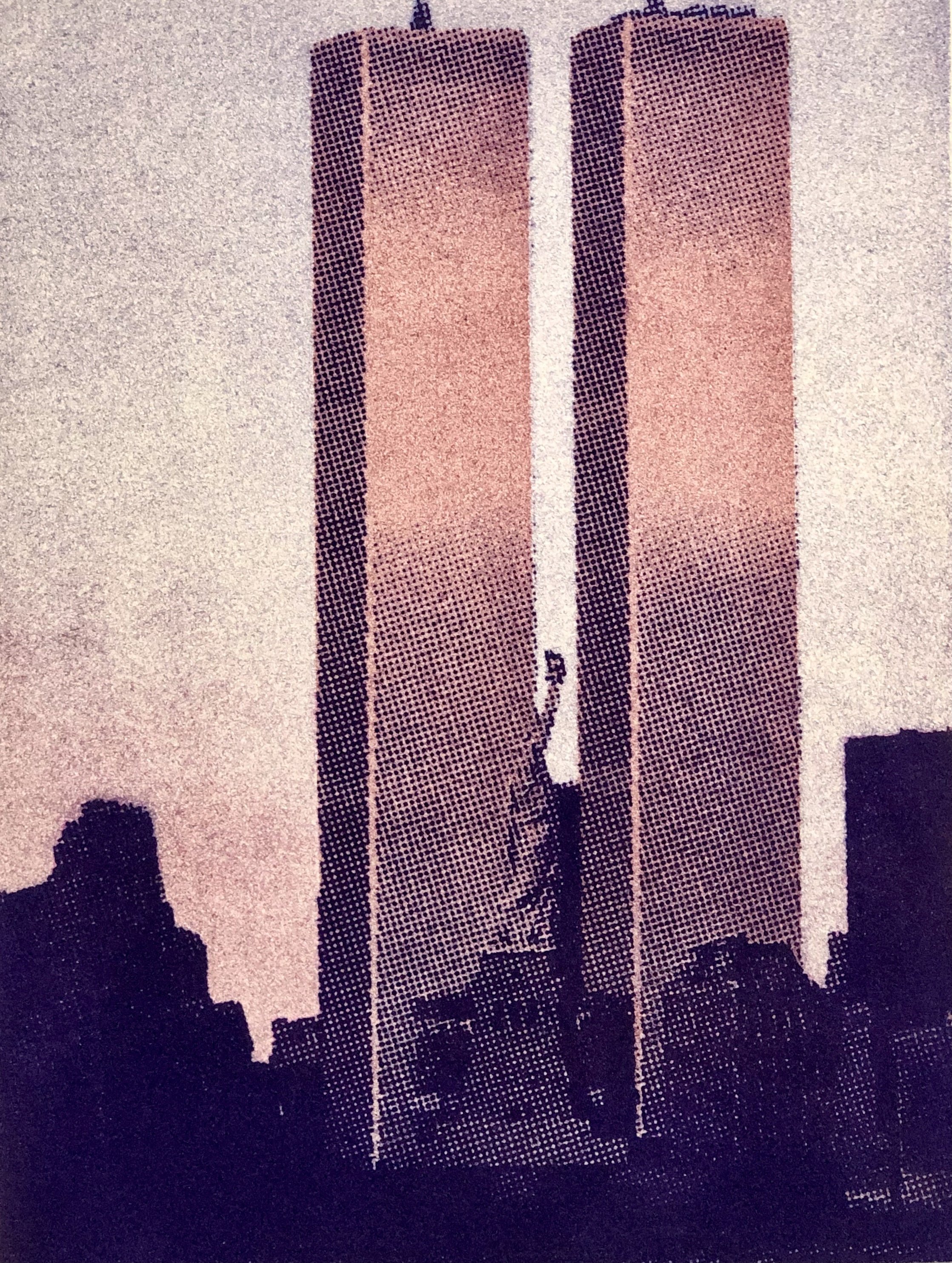Rachel Libeskind
End of Icons
Opening: September 11th, 6- 8 PM
September 11th - October 9th, 2021
The image of the World Trade Center has become a type of logo. A brand of nostalgia and paradise lost. A false memory of an innocent time. A paramnesia of American Iconography: the reason for wars™. For those of us born in the mid 80’s to early 90s, 9/11 is a unique time-stamp on the end of childhood. It was three days after my bat mitzvah and the first day of seventh grade. My puberty catalyzed by the violent end of the twentieth century; our adolescence playing out with wars we knew could not be won. The Bush era, freedom fries, the final death knell of glamorous (easy) air travel, shoe bombers, the rise of a new American Imperialism. The symbol of these two towers is almost banal in it’s commercialism and yet, it remains holy in its sacrificial memory - the towers continue to haunt us.
When I moved to New York as a teenger the void of the towers was everywhere. We lived downtown, a neighborhood which had regressed in its gentrification as the result of the piles of dust and smell of death that lingered on for years. The financial district was still a ghost town where the remnants of burnt office memos gloomily fluttered through the dusk breeze and the particles of lost matter could still be seen in the cracks of old buildings. Neighbors were still recalling the debris that had fallen on their rooftops. The void was ever present. It feels different now; the twin towers on bumper stickers and on the pins of police officers, the faded names of fallen firefighters decorate fire trucks. How strange that the loss of this architectural idol has played out like the loss of the Library of Alexandria, or the second temple in Jerusalem. Centuries from now, people will refer to the two standing towers, to the tragedy that befell them, to the cataclysmic era of useless wars that followed. The towers - albeit uninspired and conservative in their architectural style - will be remembered as though they were some kind of world wonder.
These 100 representations of the towers are made in the same vein as a devotional image. The first devotional images, originally of Christ and his martyrs, were created with the express purpose to aid in grief and suffering. These small works are intended for personal reflection and contemplation at home. The history of the devotional image (sometimes referred to as a cult image or a votive image in pre-Christian societies) ranges throughout many cultures and religions, dating back to the earliest archaeological remnants of human civilizations. The idea that a symbol (or an image/object) could represent the power of a deity - as a kind of divine proxy, or holy relic - is the basis of the cult image. These landscapes of New York and the twin towers are exactly these symbols; they are made of flock - dust particles arranged by color to create different moods and invoke different gazes of the buildings. Every pigment is another shade of memory. The images are taken from photographs from different moments between 1973 and 2001 - a Pan Am advertisement, the cover of a Jazz Standards piano book, a Benson & Hedges campaign, a VHS promotional poster. Each perspective portrays the towers from a different geographical vantage point and provenance, which could either aid in our own memories of the buildings, or falsify them. From ashes to ashes, from dust to flock, history’s shadow is soft and cloying.
Rachel Libeskind
Berlin, 2021

